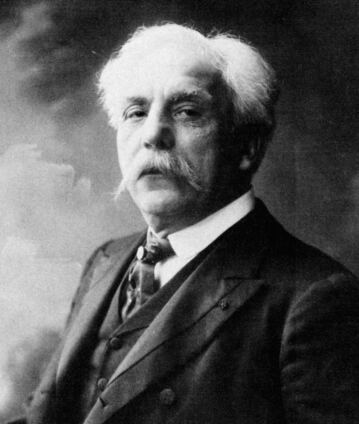가브리엘 포레
작곡가
파리 콘서바토리에서 공부하지 않은 가브리엘 포레는 아웃사이더였지만 그 시대의 가장 영향력 있는 작곡가로 성장했다. 주로 소규모 편성의 작품을 썼는데, 그의 피아노 음악과 100곡이 넘는 노래는 파리 살롱에서 찬사를 받았으며 마테를링크의 〈펠레아스와 멜리장드〉를 위한 무대 음악과 레퀴엠은 오늘날 그의 대표적인 작품으로 꼽힌다.
음악 재능이 뛰어난 가브리엘 포레는 9세에 고향인 남프랑스를 떠나 파리로 와서 설립자의 이름을 딴, 당시 프랑스에서 유일한 기숙 학교인 에콜 니더마이어에서 교회 음악가 교육을 받기 시작했다. 그곳에서 평생 우정 관계를 유지하게 될 카미유 생상스에게서 가르침을 받았다. 포레가 1877년 지방에서 첫 직책을 맡은 뒤 유명한 파리 마들렌 성당의 카펠마이스터가 된 것도 생상스 덕분이었다. 지위의 명성에 비해 급여가 보잘것없었던 탓에 그는 합창 반주자와 피아노 교사로도 일해야 했다. 게다가 40년 넘게 오르간 주자로 활동하면서 단 하나의 오르간곡을 쓰지 않을 정도로 포레에게 교회 음악가는 내키지 않는 단조로운 직업이었다. 1896년 포레는 파리 콘서바토리에서 작곡 클래스를 맡게 되었다. 그에게 수업을 받은 제자로는 나디아 불랑제, 모리스 라벨 같은 음악가가 있었고, 1905~1920년에는 이 기관을 이끌었다. 포레의 운명은 베토벤이나 스메타나의 운명과 비슷했는데, 청력을 잃긴 했지만 그렇다고 그의 창작력이 저하된 건 아니었다. 그의 유명한 레퀴엠이나 1913년에 막 개관한 샹젤리제 극장에서 큰 성공을 거둔 유일한 오페라 〈페넬로페〉는 청력을 거의 잃은 후에 쓰인 작품들이다. 포레는 1924년 파리에서 폐렴으로 79세의 나이에 눈을 감았다.